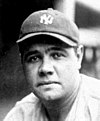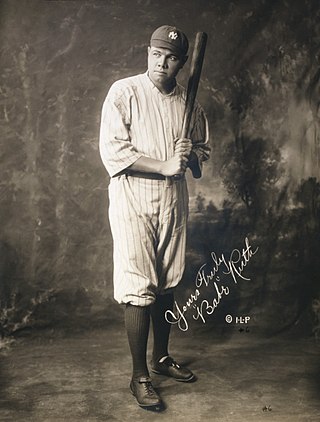
George Herman "Babe" Ruth was an American professional baseball player whose career in Major League Baseball (MLB) spanned 22 seasons, from 1914 through 1935. Nicknamed "the Bambino" and "the Sultan of Swat", he began his MLB career as a star left-handed pitcher for the Boston Red Sox, but achieved his greatest fame as a slugging outfielder for the New York Yankees. Ruth is regarded as one of the greatest sports heroes in American culture and is considered by many to be the greatest baseball player of all time. In 1936, Ruth was elected into the Baseball Hall of Fame as one of its "first five" inaugural members.
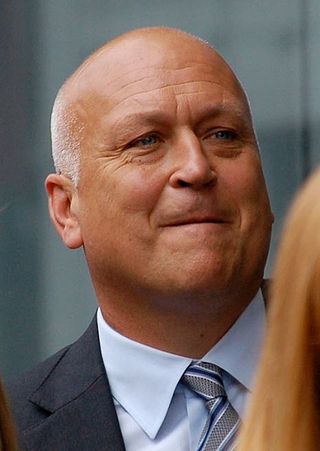
Calvin Edwin Ripken Jr., nicknamed "The Iron Man", is an American former baseball shortstop and third baseman who played his entire 21-season career in Major League Baseball (MLB) for the Baltimore Orioles (1981–2001). One of his position's most offensively productive players, Ripken compiled 3,184 hits, 431 home runs, and 1,695 runs batted in during his career, and he won two Gold Glove Awards for his defense. He was a 19-time All-Star and was twice named American League (AL) Most Valuable Player (MVP). Ripken holds the record for consecutive games played (2,632), having surpassed Lou Gehrig's streak of 2,130 that had stood for 56 years and that many deemed unbreakable. In 2007, he was elected to the National Baseball Hall of Fame in his first year of eligibility with 98.53% of votes, the sixth-highest election percentage ever.

The Curse of the Bambino was a superstitious sports curse in Major League Baseball (MLB) derived from the 86-year championship drought of the Boston Red Sox between 1918 and 2004. The superstition was named after Babe Ruth, colloquially known as "The Bambino", who played for the Red Sox until he was sold to the New York Yankees in 1920. While some fans took the curse seriously, most used the expression in a tongue-in-cheek manner.
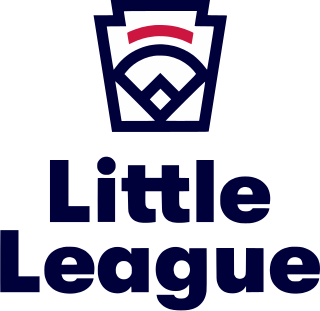
Little League Baseball and Softball is a 501(c)(3) nonprofit organization based in South Williamsport, Pennsylvania, United States, that organizes local youth baseball and softball leagues throughout the United States and the rest of the world.
The history of baseball can be broken down into various aspects: by era, by locale, by organizational-type, game evolution, as well as by political and cultural influence. The game evolved from older bat-and-ball games already being played in England by the mid-18th century. This game was brought by immigrants to North America, where the modern version developed. By the late 19th century, baseball was widely recognized as the national sport of the United States. Baseball is popular in North America and parts of Central and South America, the Caribbean, and East Asia, particularly in Japan, South Korea, and Taiwan.
Professional baseball leagues, amateur-baseball organizations, sportswriting associations, and other groups confer awards on various baseball teams, players, managers, coaches, executives, broadcasters, writers, and other baseball-related people for excellence in achievement, sportsmanship, and community involvement.

Calvin Edwin Ripken Sr. was an American baseball player, scout, coach and manager. who spent 36 years in the Baltimore Orioles organization. He played in the Orioles' farm system beginning in 1957, and later served as coach and manager of the parent club, on which his sons Cal Jr. and Billy played.
Old Time Baseball is a 1995 baseball video game designed and programmed by Don Daglow, Hudson Piehl, Clay Dreslough, and James Grove. It was developed and published for MS-DOS by Stormfront Studios. Old Time Baseball uses the Tony La Russa Baseball engine, The current teams’ players and ballparks, and substituted them with complete lineups of every major league team from 1871 to 1981 — 12,000 players in all. 16 old ballparks were also included with accurate dimensions.
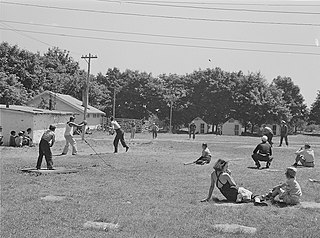
Amateur baseball is baseball in which the players either are not paid for playing, or receive only a modest stipend or employment arranged by the team's boosters. Amateur baseball is played in the United States by players of all ages, from young children to adults.
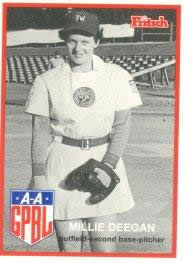
Mildred Eleanor Deegan was an American pitcher, outfielder and second basewoman who played ten seasons in the All-American Girls Professional Baseball League, from 1943 to 1952.
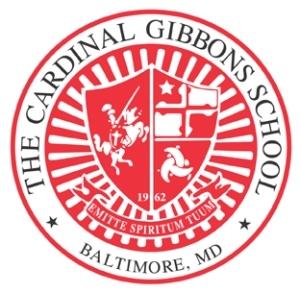
The Cardinal Gibbons School, also referred to as Cardinal Gibbons, CG, and most commonly as Gibbons, was a Roman Catholic high school and middle school for boys in Baltimore, Maryland, USA. A private institution for grades 6–12, Gibbons drew its enrollment from the neighborhoods of southwest Baltimore City and the counties surrounding the Baltimore metropolitan area, with some as far away as Harford County, Carroll County, and Frederick County.
The 1983 Baltimore Orioles won the Major League Baseball World Series after finishing first in the American League East with a record of 98 wins and 64 losses, The Orioles won the championship by beating the Philadelphia Philles, 4–1, in the 1983 World Series. The season was the Orioles' first in nearly 15 years without manager Earl Weaver, who retired after the Orioles missed the playoffs in the final game of the 1982 season. The Orioles replaced the future Hall of Famer Weaver with Joe Altobelli. The World Series victory was the Orioles' first championship since 1970 and their most recent to date.
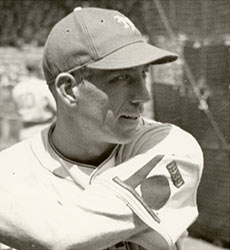
Louis Peo Chiozza was an American professional baseball player who played a total of six seasons with the Philadelphia Phillies and New York Giants of Major League Baseball.

The Bethesda Big Train is a collegiate summer baseball team based in Bethesda, Maryland. The team is a member of the Cal Ripken Collegiate Baseball League (CRCBL), and derives its name from the nickname of Hall of Fame pitcher Walter Johnson, who was a Bethesda resident for ten years. The Big Train plays its home games at Shirley Povich Field. As of August 2021, more than 195 Big Train alumni have played professional baseball, including 17 in the major leagues.
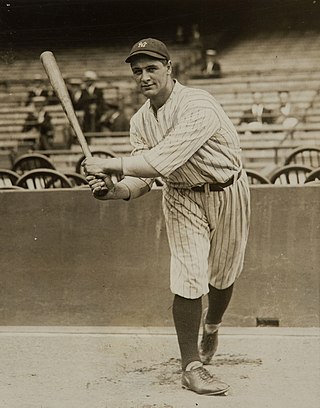
Henry Louis Gehrig was an American professional baseball first baseman who played 17 seasons in Major League Baseball (MLB) for the New York Yankees (1923–1939). Gehrig was renowned for his prowess as a hitter and for his durability, which earned him his nickname "the Iron Horse". He is widely regarded as one of the greatest baseball players of all time. He was an All-Star seven consecutive times, a Triple Crown winner once, an American League (AL) Most Valuable Player twice, and a member of six World Series champion teams. He had a career .340 batting average, .632 slugging average, and a .447 on base average. He hit 493 home runs and had 1,995 runs batted in (RBI). He still has the highest ratio of runs scored plus runs batted in per 100 plate appearances (35.08) and per 100 games (156.7) among Hall of Fame players. In 1939, he was elected to the Baseball Hall of Fame and was the first MLB player to have his uniform number (4) retired by a team.
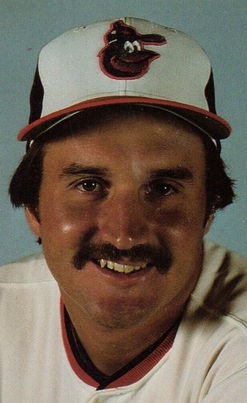
Wayne Richard Krenchicki was a Major League Baseball (MLB) third baseman. He played all or parts of eight seasons in the majors from 1979 until 1986. He was a past manager of the Evansville Otters of the independent Frontier League. He played college baseball at the University of Miami.
Baseball Factory, Inc. is a United States company specializing in player development and college placement of high school baseball players. The company is headquartered in Columbia, Maryland, approximately 20 miles southwest of Baltimore. Over six hundred events, across all 50 states, are hosted by Baseball Factory throughout the year, ranging from national tryouts to camps, tournaments and showcases. As of 2017, Baseball Factory has helped over 100,000 baseball players compete at the college level, garnering more than $1 billion in scholarships.
Composite baseball bats, opposed to aluminum or wood baseball bats, incorporate a reinforced carbon fiber polymer, or composite, into the bat's construction. This composite material can make up all or part of the bat. Bats made entirely of this polymer are referred to as composite bats. Bats which only incorporate a portion of polymer are referred to as composite hybr Composite bats can also be constructed to improve their trampoline effect over time. That advantage, namely the improved trampoline effect over a break in period, put the use of composite bats under further NCAA scrutiny during the 2009 NCAA Division I baseball tournament. Composite bats, tested after they were already broke in, showed performance standards well beyond the accepted ball exit speed ratio (BESR) Test.
Baseball in Germany started in 1936, with the first official baseball game being played at the 1936 Olympics. After World War II, baseball was popularized by American soldiers who were stationed in Germany. Today, baseball is a minor sport in Germany, although the country is still home to one of Europe's biggest baseball communities, with around 30,000 active players. The national governing body is the Deutscher Baseball und Softball Verband, and the highest baseball league is the 1. Baseball Bundesliga. Max Kepler is currently the only German-developed player in Major League Baseball.

















